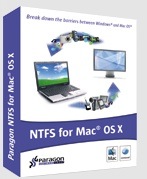If Apple’s iBookstore can keep expanding the number of titles it carries (I think it has around 100,000 titles compared to 700,000 or so at Amazon), it could have a bright future. The share of adults in the United States who own an e-book reader doubled to 12% in May 2011 from 6% in November 2010.
This is the first time since the Pew Internet Project (http://pewinternet.org) began measuring e-reader use in April 2009 that ownership of this device has reached double digits among U.S. adults. Tablet computers haven’t seen the same level of growth in recent months.
These findings come from a survey conducted from April 26-May 22 among 2,277 adults ages 18 and over, including surveys in English and Spanish and on landline and cell phones. The margin of error for the sample is plus or minus two percentage points.
Both e-book reader and tablet computer adoption levels among U.S. adults are still well below that of other tech devices that have been on the market longer, according to the Pew Internet Project. Cell phones are far and away the most popular digital device among U.S. adults today, followed by desktop and laptop computers, DVRs, and MP3 players. This would seem to discourage the popular opinion that tablets such as the iPad are killing laptop sales (perhaps it’s just killing netbook sales).
The Pew Internet Project says there’s notable overlap in e-reader and tablet computer ownership; 3% of US adults own both devices. Nine percent own an e-book reader but not a tablet, while 5% own a tablet computer but not an e-reader.
Further confirming the overall trend toward adoption of mobile devices, this survey marks the first time that laptop computers are as popular as desktop computers among U.S. adults. In November of last year, desktop ownership outpaced laptop ownership by 8 percentage points, 61% to 53%. This changing pattern is the result of both a steady decline in the popularity of desktops and a steady increase in the popularity of laptops over time. Laptops have already overtaken desktops in popularity among adults under age 30, and appear poised to do the same among older adults.
— Dennis Sellers


